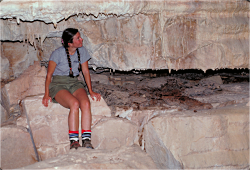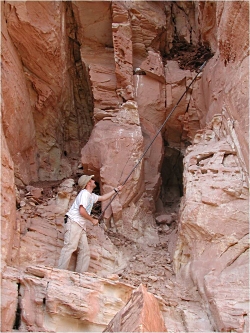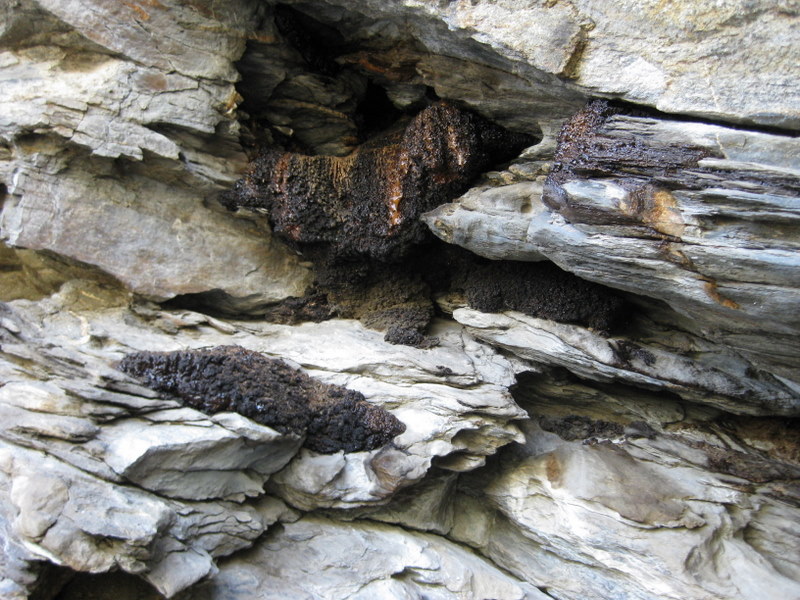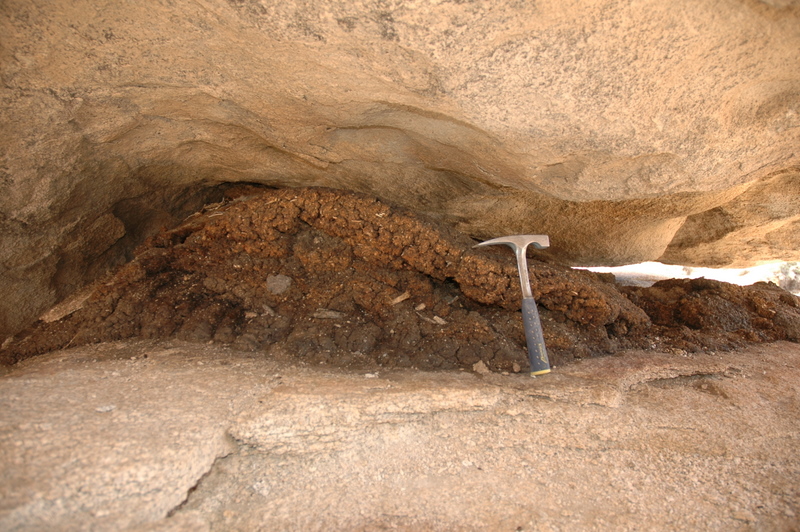
Copyright © 2009 Ken Cole
 Reaching for a Pack Rat Midden
Reaching for a Pack Rat Midden
Copyright © 2009 Ken ColeOne of the best storytellers in Utah’s national parks is not a ranger, but the lowly packrat.The Legacy of Early Grazing on Utah’s Rangelands
Their stories of past plant communities are written in their middens. The midden is a heap of leaves, twigs, seeds and fruits the packrat discards outside its nest. Protected in a desert cave or rock crevice and preserved by a rat’s own urine, this heap is a detailed and accurate time capsule of the past local flora.
Ken Cole with the US Geological Survey is a fluent translator of the packrat’s stories. Ken and colleagues sampled old packrat nests around Glen Canyon National Recreation Area and Capitol Reef National Park. By carbon-14 dating, the nest ages are known to span the last 10,000 years. As controls, they also collected nests from mesa tops inaccessible to livestock. Ken and colleagues then carefully translated these packrats’ stories by identifying and counting the plant fragments in these fossil nests.
At both Capitol Reef and Glen Canyon, old packrat nests revealed pre-settlement plant communities that were rich in diverse grasses, wildflowers and shrubs. Then these floras changed. Beginning 150 years ago, vast herds of sheep and cattle tromped and chewed their way across the unfenced rangelands of Utah in numbers unimaginable today. We know that palatable plant species and those susceptible to trampling suffered declines, because they are absent from middens from that time period. Unpalatable shrubs multiplied. Despite curtailed grazing in subsequent decades at Capitol Reef and Glen Canyon, packrats show us that the flora still has not recovered. Like Aesop’s fables, this cautionary lesson of the packrat’s ecological tale remains clear and relevant today. We should all listen.
This is Linda Kervin for Bridgerland Audubon Society.
The Legacy of Early Grazing on Utah’s Rangelands
Credits:
Photos: Courtesy and Copyright Ken Cole
Text: Julio Betancourt USGS and Jim Cane, Bridgerland Audubon
Additional Reading:
Betancourt, Julio L., Thomas R. Van Devender, and Paul S. Martin, eds. Packrat Middens: The Last 40,000 Years of Biotic Change, University of Arizona Press, 1990 https://www.uapress.arizona.edu/books/BID40.htm
Pack Rat Middens, Colorado Plateau in Land Use History of North America, Ken Cole, USGS/Northern Arizona University, https://cpluhna.nau.edu/Tools/packrat_middens.htm
Introduction [to Carbon 14 Dating], Tom Higham, Radiocarbon Laboratory, University of Waikato, New Zealand https://www.c14dating.com/int.html [Sep 24, 2009]


